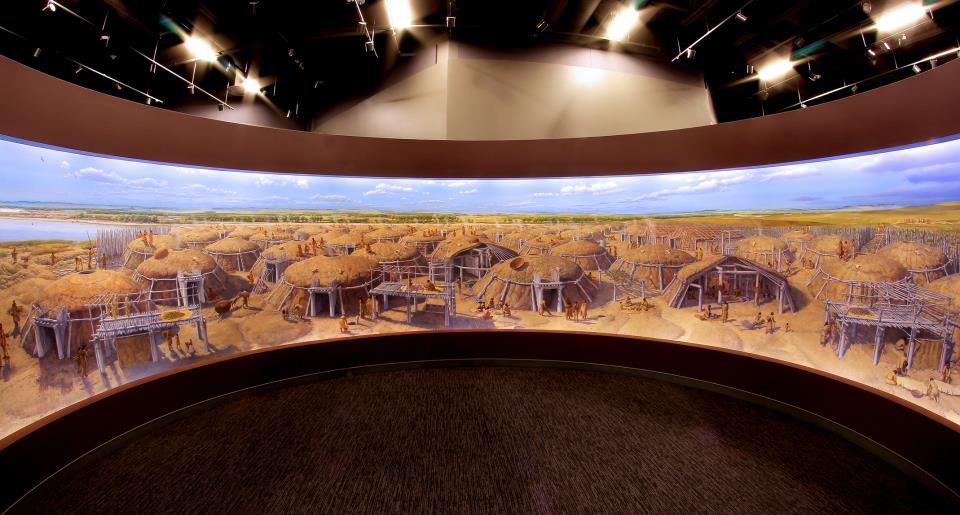
By A.D. 1100, the ancestral Mandan, Hidatsa, and Arikara people were establishing villages along the Missouri River and its tributaries to farm corn, beans, squash, and sunflowers. They built permanent villages and used their food surpluses for trade. Nomadic tribes exchanged hides and meat with villagers for corn and other farming products. These bustling cities became major centers of politics and trade.
Featured are an exquisite mural and artifacts to help you understand life in these earliest cities:
- A hand-painted cyclorama of a Mandan Indian village (Double Ditch Indian Village State Historic Site) at A.D. 1550 with natural sounds, the spoken Mandan language, and 270 degree view of the landscape
- Hundreds of artifacts (bone tools, pottery, stone tools, decorative items of shell and bone, games, and more) illustrating their rich material culture
- A variety of trade items including marine shell and pipestone
- Quillwork and beadwork of the Mandan, Hidatsa, and Arikara traditions
- Gardening tools and crops

